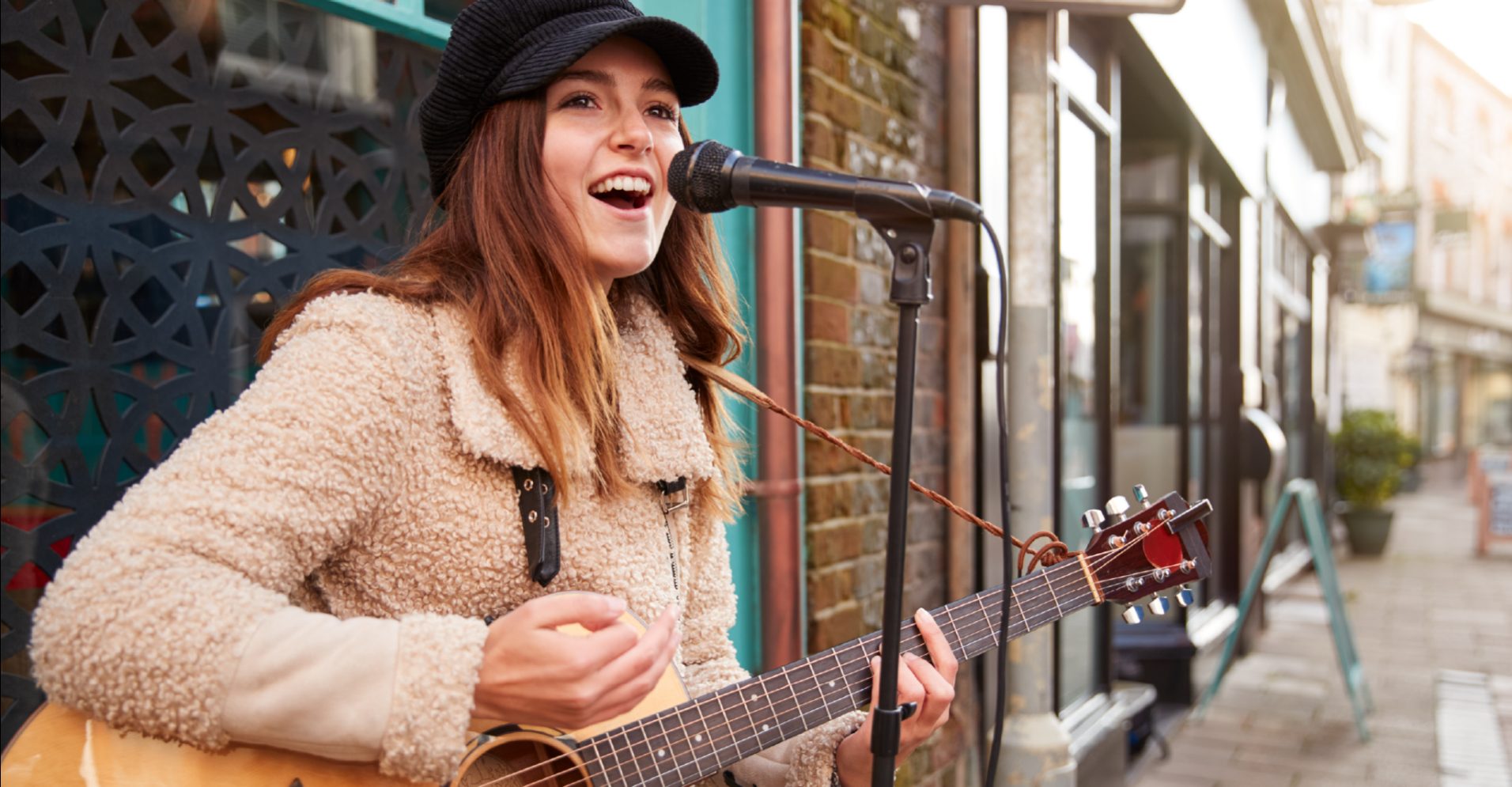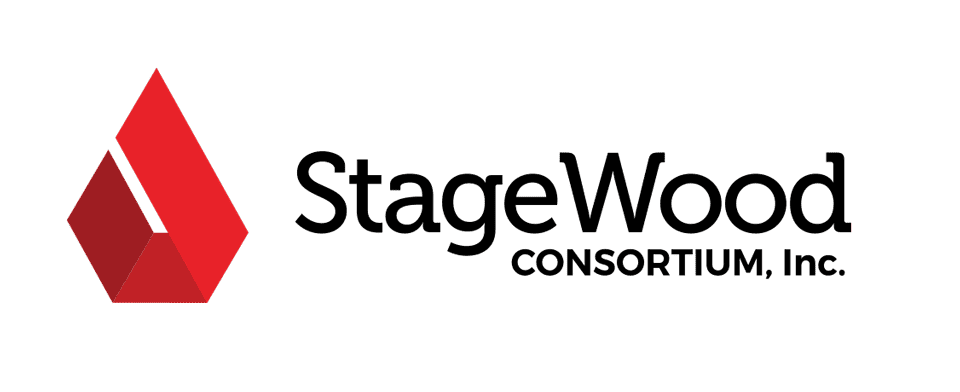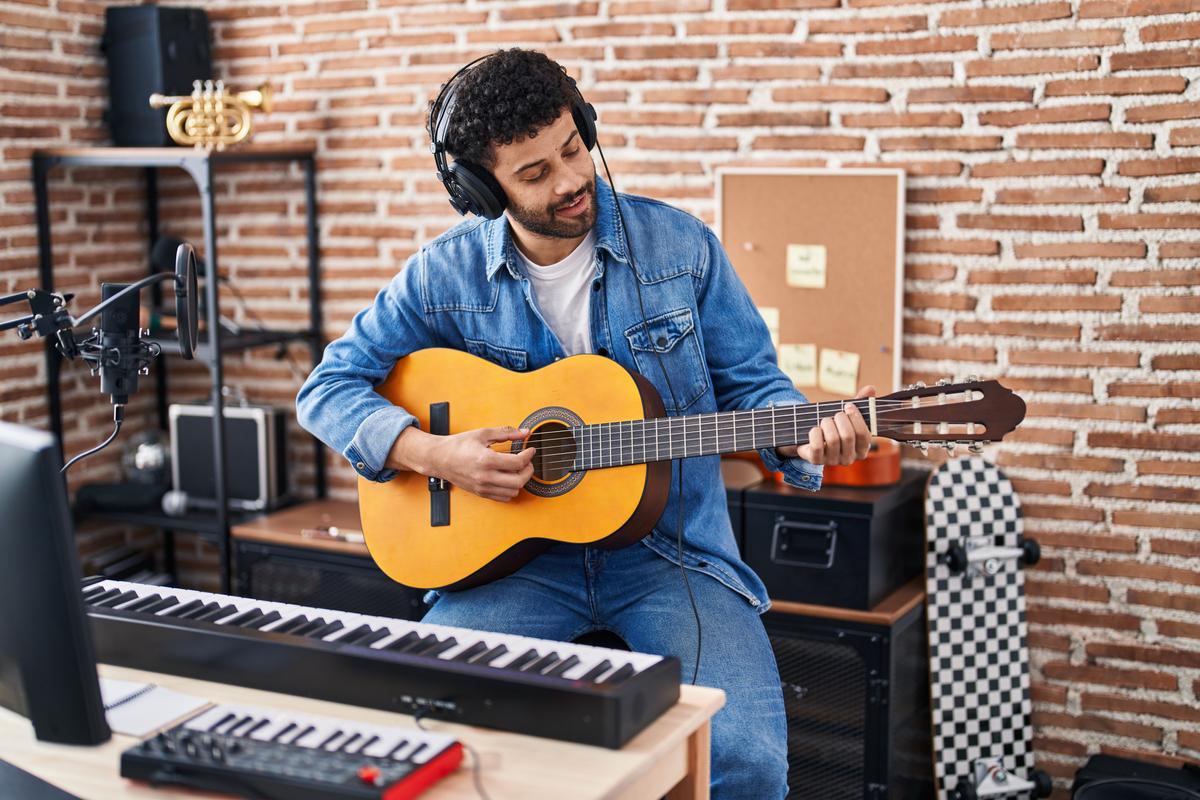How to get discovered as an artist can feel like navigating a labyrinth.
The art world is vast, and standing out amidst countless talented individuals can be daunting. But this journey from obscurity to recognition is what separates the hobbyist from the professional artist.
If you’re unsure about how to make your mark in the artistic landscape, it’s natural to feel overwhelmed. But remember – every renowned artist started where you are right now.
Achieving prosperity in art is not just about skill; it necessitates tactics, steadfastness and having the ability to take advantage of openings. And that’s exactly why understanding how to get discovered as an artist, becomes pivotal for your creative career.
Table of Contents:
- The Power of Social Media in the Art World
- Building Your Professional Artist Website
- Navigating Open Calls & Art Opportunities
- Participating Actively in the Art Community
- Understanding Commercial Aspects without Losing Artistic Integrity
- Avoiding Common Mistakes Artists Make
- Harnessing Public Relations Services Effectively
- Cultivating Confidence And Motivation In Your Artistic Journey
- FAQs in Relation to How to Get Discovered as an Artist
- Conclusion
The Power of Social Media in the Art World
When it to learning how to get discovered as an artist, you need to first understand the impact of promoting art and creating a successful artist’s brand. Social media has transformed how artists connect with their audience, present renowned art opportunities, and even pursue artistic purposes.
In this digital age where everyone can be connected at the touch of a button, Instagram stands out as one powerhouse platform for contemporary artists. Its visual-centric design makes it perfect for showcasing your work while its vast user base provides potential exposure on an international scale.
Mastering Instagram as an Artist
To truly leverage Instagram’s capabilities, you need more than just beautiful images – although those are certainly important. You also require consistency in posting. Regular updates keep your followers engaged and help maintain visibility within the ever-changing algorithmic landscape that dictates what users see when they log into their account.
Captions should not be overlooked either. They’re instrumental in engaging viewers by providing context or telling stories about each piece of artwork posted which encourages conversation leading to higher engagement rates overall. Canvas’ guide is great resource if you’re looking tips on crafting compelling captions.
Beyond individual posts, Instagram offers opportunity to highlight collaborations with other creatives or participation in exhibitions through features like Stories or IGTV videos. By tagging relevant parties using appropriate hashtags, you increase chances being discovered by gallery owners who could potentially take career next level.
As part of learning how to get discovered as an artist, social media helps amplify the impact of how artists connect with their audience. Share on XBut remember – quality over quantity always wins day. Managing too many accounts to promote online art marketplaces simultaneously may dilute online presence, unless done strategically. Focus primarily on channels where most target audience exists rather spreading thin across multiple platforms without substantial impact.
Avoid online vanity contests and avoid online art market places that are too saturated. Although they make look attractive, selected artists will become overlooked in the vast submissions.
Additionally, build your professional artist website to show off how you create art. In the realm of contemporary art, a professional website is more than just an online presence; it’s your digital portfolio, a platform where you can showcase your artistic practice to potential buyers – galleries and critics alike.
Key Takeaway: Harness the power of social media, especially Instagram, to showcase your art and connect with a global audience. Regular posts, engaging captions, and strategic collaborations can boost visibility. Remember: quality over quantity.
Your own dedicated site offers autonomy that social media platforms often lack. You control how you present renowned art opportunities and engage with fans on this stage. It also makes you stand out as an artist, instead of competing in online vanity art contests.
Check out what Artenda.net exemplifies! It’s what successful artists do right when it comes to crafting their online home base.

Key Elements of an Effective Artist Website
The cornerstone of any artist’s website are high-resolution images showcasing artworks in all their glory. These visuals give visitors detailed insights into each piece from various angles or perspectives – crucial elements that influence viewer perception immensely.
A well-crafted bio also plays its part by offering context about who you are as an artist – both personally and professionally. This background information helps viewers understand your body of work better while creating deeper connections with them at the same time.
When crafting your portfolio to promote online art marketplaces, let’s introduce you to Contemporary Art Issue (CAI). Taken directly from their website, “CAI is a hybrid platform for contemporary art in the form of an online magazine (including YouTube), career advice services for artists, and a gallery program. It is also the mission of CAI to empower artists by producing adequate and industry-approved advice for artists for long-term success in the highest realms of the art world.”
Key Takeaway: Showcase high-res images of your work, provide insightful bios, make contact info accessible and regularly update news about exhibitions or awards. Remember: consistency is key in maintaining viewer engagement.
Navigating Open Calls & Art Opportunities
Open calls and art chances can be a real boon for budding artists, giving them an invaluable opportunity to exhibit their work. However, the process of submitting your artwork successfully requires careful planning and strategic execution.
Let’s explore how you can leverage these platforms effectively to elevate your artistic practice in the global art world, and further your discovery of understanding how to get discovered as an artist.
A Thorough Understanding of Submission Guidelines
The first step towards successful submissions is gaining a deep understanding of the guidelines provided by each organization or contest. These rules typically include specifications about size, medium, theme, and presentation format, among other details.
You need to understand submission guidelines thoroughly, akin to creating an effective content marketing strategy – one that you follow meticulously every time there’s an opportunity on hand.
Your chosen pieces should not only meet all requirements but also embody your unique artistic voice authentically – this will set apart from others vying same spot. Remember, it’s essential that present renowned art opportunities are carefully curated collection works rather than random selection.
Crafting Compelling Artist Statements
In addition selecting appropriate artworks, crafting compelling artist statements often proves to be a crucial part submission process. This narrative provides context for viewers and jurors alike, helping them understand the significance behind creation.
ArtWork Archive offers useful tips on writing engaging statements. They offer similar high-quality content production strategies and good artist statements from credible and authoritative, yet relatable, audience.
Here is their strategy:
- Maintain clarity consistency throughout narration
- Evidence-based claims enhance credibility
- An authentic tone helps establish connection readers
This combination of authenticity evidence-backed assertions makes powerful impressions to jury members, increasing chances success.
Paying Attention Deadlines Organizational Skills
Beyond adhering strict submission guidelines preparing excellent portfolios, paying attention to deadlines are a critical aspect when navigating open calls successfully. If you want to master how to get discovered as an artist, you need to keep track of upcoming events deadlines by using tools, such as Google Calendar, to ensure you never miss any potential opportunity. Remember that discipline creates successful marketing campaigns for a thriving career.
Key Takeaway: Master the art of submissions: know your guidelines inside out, craft a compelling artist statement that resonates with viewers and jurors alike, keep an eagle eye on deadlines, and organize like a pro. Your unique artistic voice is your trump card – play it right.
Participating Actively in the Art Community
Another way to understand how to get discovered as an artist is to understand the art community. The art community is a bustling space teeming with creativity and collaboration. For an artist, active participation within this sphere can be both enlightening and rewarding.
Taking part in exhibitions, workshops, residencies or networking events allows you to soak up diverse artistic practices. This exposure often sparks inspiration and nurtures growth as an artist. Moreover, these platforms present renowned art opportunities where your work could catch the eye of potential collectors or gallery owners.
Networking Tips for Artists
A critical component of active involvement includes forging relationships with fellow artists and industry professionals. Networking isn’t about aggressively promoting your portfolio; it’s about cultivating authentic connections based on mutual respect and interest.
You might initiate by frequenting local art happenings – openings at galleries or museums are excellent venues to meet like-minded individuals. Be open to discussing your own creations but equally invested in learning from others’ experiences too. Remember, there are others that are also learning how to get discovered as an artist – just like you.
While social media presence is crucial today – nothing replaces direct human connection when it comes down fostering meaningful professional relationships. Artist’s expected behavior exists during networking and is a crucial part for learning how to get discovered as an artist.
In addition to face-to-face interactions, consider joining online communities tailored specifically towards visual arts such as Behance or LinkedIn groups focused around contemporary artists. These digital spaces offer additional channels for exchanging ideas and receiving feedback from peers worldwide, which helps avoid common mistakes that emerging artists make while trying their luck through unprofessional portrait pictures on online vanity contests without any success.
Further, approach gallery owners professionally. Remember they’re people first before business entities. It’s important not just what you say but how you communicate it: always show appreciation towards their time while expressing clearly why there could be synergy between their venue’s vision and themes explored through your artwork.
Key Takeaway: Engage in the art community, attend events, and network authentically to gain exposure. Don’t just promote your work; foster genuine connections with peers and professionals.
Understanding Commercial Aspects without Losing Artistic Integrity
The business side of art can seem like a daunting landscape for artists whose primary focus is on their creative expression. However, to truly learn how to get discovered as an artist and build a sustainable career, it’s crucial to understand how commercial aspects operate.
Balancing Business Skills with Creativity
A successful artist doesn’t just create – they also know how to sell what they’ve created. This balance between artistic passion and business acumen does not mean sacrificing your creativity or unique style; instead, it involves making strategic decisions about marketing and selling your artwork effectively.
An inspiring example of how to be discovered as an artist would be to follow the footsteps of the iconic Vincent Van Gogh. Despite enduring numerous hardships throughout his life, he managed to stay true to his distinctive style while understanding the importance of promoting his work effectively.
Developing these necessary skills needn’t take away from creating art either. There are plenty of resources available online that offer guidance in key areas such as contract negotiation or pricing strategies which you can learn at leisure.
Maintaining Artistic Purpose Amidst Commerce
Fear often arises among artists stepping into commerce – will I lose sight of my original purpose? Will I have no time left for creating impactful artworks? The answer lies in striking the right balance: continue pursuing artistic purposes passionately even when engaging commercially.
Incorporate elements that appeal commercially and within your personal aesthetic vision, thereby maintaining integrity whilst broadening appeal simultaneously. For instance, if certain color palettes tend to be popular among buyers, consider experimenting with them without compromising your own unique approach.
Remember the ultimate achievement of understanding how to get discovered as an artist isn’t solely monetary; rather expressing oneself authentically through one’s craft while sustaining financially viable practice concurrently essential any contemporary artist seeking leave mark world today.
Key Takeaway: Don’t fear the business side of art; embrace it without losing your creative integrity. Strike a balance between commercial appeal and personal aesthetic vision – success isn’t just financial but also about authentic self-expression.
Avoiding Common Mistakes Artists Make
It’s easy to stumble into pitfalls as an emerging artist, especially when it comes to online promotion and presentation. Two common mistakes are over-reliance on vanity art contests and using unprofessional imagery.
Let’s delve deeper into these issues and how you can navigate them successfully in your artistic journey.
Evaluating Online Platforms Wisely
The allure of instant fame through online art marketplaces is tempting for many artists. But remember, the path towards becoming a successful artist involves more than just digital exposure.
Diversification should be at the heart of your promotional strategy of understanding how to get discovered as an artist. Don’t put all your eggs in one basket by relying solely on digital platforms; explore physical galleries too where there’s less competition but higher chances for meaningful interactions with collectors or gallery owners who actively pursue commercial purposes within their establishments.
Balancing between different channels while ensuring each platform aligns well with your brand as an artist is key here. Remember, social media like Instagram, may seem attractive due to its reach, but don’t let it consume all your efforts – use it wisely.
Avoiding Unprofessional Imagery
Your image matters – both literally and figuratively. A low-quality portrait picture could create negative impressions on an artist’s work even before someone views what you’ve created so far. It undermines not only perception about quality of work but also reflects poorly upon expected behavior exist among professional contemporary artists today.
Consider investing time (and perhaps money) in creating high-quality images that accurately represent you as an individual pursuing artistic purposes passionately yet professionally. Professional Photo Tips provides some great advice if photography isn’t really up your alley.
Key Takeaway: Don’t let the lure of digital fame trip you up; diversify your promotional strategy and balance between online platforms and physical galleries. Keep your imagery professional, as it’s a reflection of your work quality. Avoid common pitfalls to keep both early recognition and late-life discovery within reach in your artistic journey.
Harnessing Public Relations Services Effectively
Public relations (PR) services can be a game-changer in your artistic journey. They have the potential to catapult you into the limelight, getting your work showcased on popular platforms and widening your audience reach.
The key is knowing how to leverage these PR resources effectively. Here’s how:
1. Selecting Suitable PR Services for Your Art Practice
Your first step should involve identifying which PR service aligns best with what you need as an artist. This decision will hinge upon factors such as reputation, cost-effectiveness, industry connections among others.
A top-notch firm that has experience working within art circles could open doors for opportunities previously inaccessible due to their established relationships within the art world.
Budget considerations also come into play when deciding on a suitable agency; while it may seem tempting going all out financially thinking this guarantees success – not necessarily true. It’s crucial finding equilibrium between affordability and desired exposure levels without compromising either end of spectrum.
2. Ensuring Alignment With Niche-Specific Connections
An additional consideration worth pondering over is whether or not prospective agencies are well-connected specifically within realms of contemporary artists like yourself – some firms specialize more so in promoting traditional forms or certain mediums, thus making them less ideal if they don’t cater directly towards needs pertaining to specific niche areas where one operates.
In addition, ensure any chosen company respects individualistic creative vision before signing dotted lines; promotional efforts must resonate with who you are at core level artistically speaking otherwise successful representation won’t materialize despite best intentions from both parties involved.
3. Maintaining Consistent Strategic Communication For Long Term Recognition And Credibility
Last but certainly not, least remember good public relation practices aren’t about sporadic promotions rather consistent strategic communication aimed at building long term recognition and credibility amongst target audiences; hence why choosing the right team plays vital role here too. So choose wisely because ultimately its your future trajectory career path we’re talking about here.
Key Takeaway: Mastering PR services can thrust your art into the spotlight. Choose a service that understands your needs, respects your vision, and has industry connections. Consistent strategic communication is key for long-term recognition and credibility.
Cultivating Confidence And Motivation In Your Artistic Journey
As an artist, confidence and motivation are as crucial to your success as the strokes of a brush on canvas. These attributes not only shape your artistic practice but also help you navigate through challenges that come along in this journey.
The first step towards cultivating confidence is acknowledging and embracing your unique talent. As ArtWork Archive suggests, setting achievable goals for yourself can significantly boost both self-belief and drive.
Finding Motivation in Pursuing Artistic Purposes
Motivation often stems from passion – if you love what you do, staying motivated to create art becomes easier. However, there may be times when inspiration seems elusive or external factors dampen enthusiasm to pursue artistic purposes.
In such instances, Format Magazine’s article on maintaining artistic motivation under varying circumstances, suggests revisiting why one chose this path could reignite the creative spark within. Reflecting upon past achievements or positive feedback can serve as powerful motivators during periods of low morale. Apart from internal sources, finding inspiration outside one’s own sphere by exploring different forms of art or engaging with other artists’ work could provide fresh perspectives rekindling creative energy.
Sustaining Regular Artistic Practice
Persistence coupled with patience paves way for late-life discovery, like renowned artists including Carmen Herrera whose dedication led her towards remarkable accomplishments despite her late-life discovery aged 89. The discipline involved in maintaining regular artistic practice plays a vital role here. Creating art should ideally become part of daily life rather than sporadic bursts dictated by mood swings.
A consistent routine helps maintain momentum ensuring continuous progress irrespective immediate outcomes.
Your desire to share visions through artwork fuels perseverance required throughout challenging yet rewarding journey. Remember, every successful artist was once learning how to get discovered as an artist; their journeys marked struggle, failure, eventual triumph just like Vincent Van Gogh.
Key Takeaway: Embrace your unique talent, set achievable goals, and draw inspiration from various sources – both internal and external. Maintain a consistent artistic practice regardless of immediate outcomes; remember that every successful artist started somewhere. Your passion will power you through the challenges towards eventual triumph.
FAQs in Relation to How to Get Discovered as an Artist
How do most artists get discovered?
Artists typically gain recognition through social media exposure, participating in art exhibitions and renowned art contests, networking within the online art platforms, and leveraging PR services.
How do you get noticed as an artist?
In sum, how to get discovered as an artist includes maintaining a strong online presence with a professional website and active social media profiles. Regularly participate in open calls or renowned art contests for wider visibility.
How do you identify up-and-coming artists?
Detecting emerging artists involves tracking their participation in notable exhibitions or residencies, press coverage they receive, awards won and following their growth on online art platforms like Instagram.
How do artists find inspiration?
Inspiration often stems from personal experiences, observations of society or nature around them. Artists also draw ideas from other forms of creative expression like literature or music.
Conclusion
It’s an ongoing process to learn how to get discovered as an artist, and social media can be a great asset to aid in your journey.
Social media platforms like Instagram can be your best friend in showcasing an artist’s work and connecting with the art world.
A professional website acts as your digital portfolio, displaying high-resolution images of your artwork and sharing key details about you and your craft.
Navigating open calls and art opportunities gives you exposure to wider audiences while participating actively in the community opens doors for collaborations and recognition.
Balancing commercial aspects without losing artistic integrity is crucial; it’s all about marrying business skills with creativity.
Avoiding common mistakes artists make such as relying solely on online vanity contests or unprofessional portrait pictures helps steer clear from pitfalls that could hinder progress.
Finally, cultivating confidence, motivation, and discipline are personal attributes every successful artist needs.
Now that we’ve walked this path together – what’s next? It’s time to put these insights into action! Stagewood is here to help emerging talents like yourself get discovered while promoting live events which build local economies. Ready for success? Join us today.


